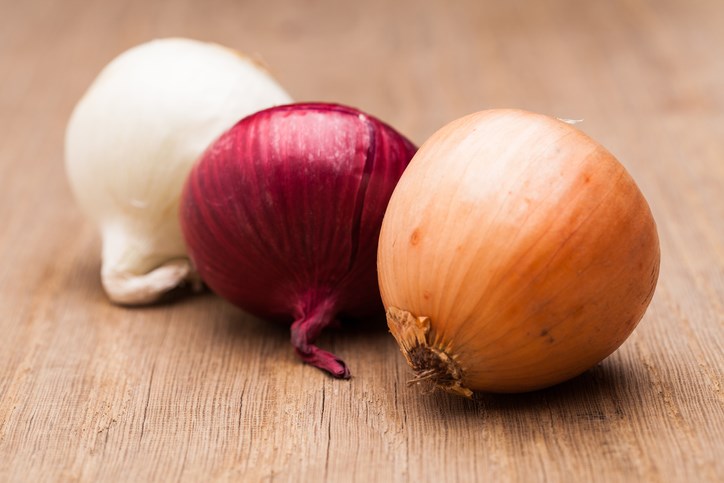Canadian public health officers have expanded their warning over contaminated U.S. onions which have sickened over 200 Canadians across at least five Canadian provinces.
At the end of July, the Public Health Agency of Canada (PHAC) had traced the mysterious outbreak to U.S.-grown purple onions, though without knowing the specific brand, recommended Canadians avoid all purple onions from the U.S.
Since then, the number of cases have climbed to 239 illnesses, up 119 since Aug. 1.
Now the PHAC is recommending Canadians from any province or territory to “not eat, use, sell or serve any red, white, yellow, and sweet yellow onions from Thomson International Inc. of Bakersfield, California, USA.” The advice also applies to any products made with the suspect onions.
Individuals as well as “retailers, distributors, manufacturers and food service establishments such as hotels, restaurants, cafeterias, hospitals and nursing homes” should first avoid purchasing or using the onions. However, if it’s not clear where a red, yellow, white or sweet onion comes from, do not eat it, advice health officials.
UPDATE: 239 confirmed cases in Canada. If you are unsure where a red/yellow/white/sweet yellow onion was grown, do not eat it. Onions grown in Canada are not associated with this outbreak. Onions imported from the United States are under investigation. https://t.co/eEeT1UFnBb pic.twitter.com/EYgwyYrD8f
— Health Canada and PHAC (@GovCanHealth) August 7, 2020
Most of the cases have been in British Columbia (67) and Alberta (149), and 29 individuals have been hospitalized.
The sick range from infants to 100 years old and a slim majority of cases have been in females (54%). Those 5 and under as well as older adults, pregnant women and others with weakened immune systems are at the highest risk of falling seriously ill, according to PHAC.
The public health authority recommends that you check your shelves and refrigerator for any onions either of unknown origin or from Thomson International Inc. of Bakersfield, California. If you have any in your kitchen, throw them out, wash your hands thoroughly and sanitize the drawers where they were kept. Any surfaces that have come in contact with the onions, such as countertops, knives or cutting boards, should be sanitized.
The bacteria can be picked up from contaminated food, a surface or animal can be spread to other people while not showing any symptoms. Symptoms include fever, chills, diarrhea, abdominal cramps, headache, nausea and vomiting. They can last from four to seven days and will clear up without treatment in healthy people, though sometimes antibiotics are required. Most people recover within a few days.
If you do fall ill with the bacteria, PHAC recommends you do not cook food for other people. Any concerns around food safety at grocery stores or restaurants should be referred to your local local health authority.



